Isn’t it time to stop? What should Ukraine do with the transit of Russian gas, oil, and ammonia?
It has repeatedly been asked and still is – why does Ukraine continue the transit of Russian gas and oil through its territory while Russia is waging a genocidal war against our country for the tenth year? The issue became more acute after February 24, 2022, and especially after September 11, when the Russian Federation launched massive missile strikes on Ukraine’s energy infrastructure. Well, the detonation of the Kakhovka HPP by the Russians on June 6 and the disguised preparation of a nuclear accident at the Zaporizhzhia NPP raise a serious question: isn’t it time to stop transit?
Gas transit
On December 31, 2024, the Agreement on the provision of services for the organization of natural gas transportation through the territory of Ukraine between PJSC Gazprom and JSC Naftogaz of Ukraine dated December 30, 2019, expires. The agreement was the result of difficult negotiations with the assistance of the European Commission.
At that time, the Russians, together with powerful European companies, zealously implemented the Nord Stream 2 project in order to make the Ukrainian route simply unnecessary, increasing Europe’s dependence on Russian supplies via a transit-free route through the Baltic. In some years, 45–47 percent of imported gas came from Russia. And the dependence of some countries members of the European Union was even greater. After all, Russia, represented by Gazprom, lost most of its positions on the European gas market after the special draining operation it in 2021 and the blowing up of the Nord Streams in September 2022. However...
However, Russian natural gas continues to flow and be consumed in the European Union. Although the EU decided to reduce gas consumption, intensify the transition to renewable energy sources, and most importantly, to replace Russian energy carriers on the market of gas and other fossil fuels (the RePowerEU plan), the EU is still unable to completely abandon supplies from Russia. The share of Russian pipeline gas fell significantly. In the first quarter of 2023, it was only 5.7 percent, with other gas coming from North Sea fields, North Africa, the Caspian, and liquefied natural gas (LNG), as well as being transported from underground storage.
However, the EU has still not managed to make a decision on a complete ban on the import of pipeline natural gas and LNG from the Russian Federation, and some countries continue to receive Russian gas in the previous contractual volumes. Hungary, Slovakia, Austria, and Italy remain consumers of pipeline gas. But they too, according to the European press, are persistently looking for alternative sources of gas in order to replace Russian supplies as soon as possible. For example, according to Politico, Austria imported 57 percent of gas from Russia in February. Russian LNG arrived at terminals in Belgium, Spain, and the Netherlands, and after regasification entered the pan-European gas network. In general, according to the estimates of the Finnish Center for Energy and Clean Air Research CREA, for the five months of the current year, pipeline and liquefied gas were imported into EU countries for a total amount of about 6.3 billion euros, which is significantly less than in 2022, when the price of Russian gas was five times higher.
Recently, Russian gas has been entering Europe in two ways. In June of this year, about 40–42 million cubic meters of gas (15 billion annually) were transported daily through the territory of Ukraine. Another 25 million cubic meters per day are supplied by Turkish Stream through Türkiye and Bulgaria. Despite all the efforts of Gazprom to destroy the Ukrainian gas transportation route, it has once again become the main route for supplies to Europe.
The Ukrainian gas transportation system (GTS) is a reliable gas transit route for the European Union. Does the transportation of Russian gas make economic sense for Ukraine? So far, considering that today 70-80 percent of the income of the GTS operator comes from the gas transportation service. Still corporate interest is not the main thing for the preservation of transit. In Ukraine, both at the governmental, corporate, and expert levels, it has always been emphasized that the Ukrainian GTS is a reliable direction of gas transportation for the EU. The European Union helps Ukraine, Ukraine helps the EU to the best of its ability.
A responsible attitude to the transit transportation of gas is enshrined in the Strategy of Foreign Policy of Ukraine dated August 26, 2021. According to point 62 of the Strategy, “Ukraine will remain a reliable and responsible partner of the EU in the matter of gas transit, which will serve as a guarantee of strengthening Europe’s energy security and will develop a strategic partnership with the EU in the energy sector. Work will be continued to ensure full integration of the energy markets of Ukraine and the EU.”
Transit guarantees are stipulated in the Ukraine–EU Association Agreement. According to paragraph 1 of Article 276 “Interruption”, “each Party shall ensure that transmission system operators take the necessary measures to:
- minimize the risk of accidental interruption, reduction or stoppage of transit and transport;
- expeditiously restore the normal operation of such transit or transport, which has been accidentally interrupted, reduced, or stopped.”
Therefore, the issue of further transportation of Gazprom gas must be coordinated and comprehensive and depends on the decision of the EU regarding the possibility/prohibition of its import. The second year of full-scale war is underway, but Russian gas continues to be consumed in the European Union. And this is the main reason for maintaining its transit through our territory. However, the Ukrainian GTS needs to be prepared both technically and financially for the new working conditions. Operator costs should be optimized by decommissioning redundant facilities or repurposing the use of currently idle compressor stations for shunting power generation.
Should the aggressor continue to receive funds in Europe for its gas in order to further destroy Ukraine, which is a candidate country for joining the EU? To say the least, it is illogical to buy gas from a country that the European Parliament recognized as a state sponsor of terrorism. But as long as Russian gas is consumed in some EU countries, its transportation must be carried out. The decision on the complete ban on gas imports from the Russian Federation (both pipeline and LNG) must be adopted by the Council of the EU.
Transportation of oil
Ukraine’s oil refining and oil transportation industries became targets for Russia to attack with the beginning of Putin’s rule. The Russian Federation purposefully invested funds and made efforts to build bypass oil transport capacities to limit transit through Ukraine and increase the financial burden on the Ukrainian economy. From more than 53 million tons of transit in the early 2000s, about 12 million tons of Russian oil are now being transported to three Central European countries.
One way or another, the last ton of Russian oil for the EU will pass through the territory of Ukraine, since Orbán’s Hungary is its main recipient. But the completion of the transit function of the oil transportation system does not mean the end of the use of the oil transportation infrastructure.
The Orbán regime’s oil injections deter Russia from massive strikes on its oil transportation infrastructure, as opposed to its fuel and refining infrastructure, which suffered fatal damage.
The presence of own oil production, even in the amount of 1.4–1.5 million tons per year, preserves the need for oil transport infrastructure. The impossibility of a quick restoration of domestic oil refining makes it necessary to deliver the produced oil through the Druzhba pipeline for processing in neighboring Slovakia or the Czech Republic. For the next two years, the countries of Central Europe will continue to import Russian oil, using exceptions from the EU oil embargo of 2022, which leads to the preservation of transit to countries such as Slovakia and the Czech Republic, which consistently and systematically support us in countering Russian aggression.
A decarbonization course does not mean an automatic end to the use of oil. Of course, Ukrtransnafta should already be working out scenarios for stopping the transit of Russian oil, repurposing part of the infrastructure for other needs, or decommissioning it. At the same time, the use of oil transport infrastructure to ensure the energy security of the state, in particular, ensuring the stability of the oil product supply system, will be of great importance. After all, we must consider the danger of further missile strikes from the Russian side even after the restoration of the territorial integrity of Ukraine within the borders of 1991. It is quite possible that there may be a need for partial development of such a protected infrastructure.
Ukraine’s membership in NATO would provide a unique opportunity for the Alliance to expand its fuel supply network (supply pipelines), which is half a century behind today’s realities, namely Russia’s war in Europe against Ukraine and against Europe. It does not even consider the realities of membership in the Alliance of Central European Countries. And here the Ukrainian oil transport system has its own prospects.
Transit of ammonia
Until February 24, 2022, the main route for the supply of Russian ammonia to the world market was the Tolyatti (Togliatti)–Odesa ammonia pipeline with a capacity of 2.5 million tons per year, through which about 76 percent of Russian ammonia exports passed. Russia’s share in the world export of ammonia in pure form is about 12 percent. It was delivered from the Russian company PJSC Togliattiazot (TOAZ) to the Odesa port plant, from where it was loaded into special ammonia tankers and headed to consumers. After the full-scale invasion, transit through the ammonia pipeline stopped, and only three of the seven TOAZ units are operating in reduced load mode. With cheap gas, Russia is one of the largest producers and exporters of ammonia and produces up to a third of the world’s ammonium fertilizers.
Russia is trying to create its own export capacity by sea transport. By the end of 2023, the first phase of the seaport complex for the transshipment of ammonia near Taman, with a capacity of 2 million tons per year, should be launched. The project should relieve TOAZ of dependence on Ukrainian transit and, according to plans, be fully completed in 2025. The total capacity of the new terminal will be 5 million tons per year. The choice of the location of the terminal is strange, because it will be in the zone of damage of long-range weapons of the Armed Forces of Ukraine.
Moscow calls the restoration of transit one of the conditions for extending the time scope of the grain agreement. The UN is mindlessly supporting the resumption of the ammonia pipeline in an effort to help global food security. Why is this important for Russia? Ammonia is produced from natural gas. Against the background of a significant reduction in the consumption of Russian gas in the EU, the increase in ammonia exports may allow to increase the volume of domestic gas consumption by the Russian chemical industry, which will bring additional funds for the war.
Why is ammonia transit unprofitable and dangerous for Ukraine? First, it will mean an increase in the Russian Federation’s income, which it will spend on the war in Ukraine. Second, ammonia is a toxic substance. An explosion as a result of another massive Russian missile attack or covert sabotage could lead to a large-scale disaster. In May 2022, an ammonia pipeline near Bakhmut was damaged, which was not in use at the time, but remained with process gas inside. Despite the fact that it did not work, the result was the formation of an ammonia cloud with a radius of 4 km. The pipeline runs in close proximity to the front line. And on June 6, 134 tons of ammonia leaked from the Tolyatti-Odesa ammonia pipeline in the Kupiansk district of the Kharkiv region as a result of shelling during hostilities. The situation with Kakhovka HPP showed that the enemy purposefully commits ecocide on the territory of Ukraine as well as any war crimes.
In 2021, 2.3 million tons of ammonia transited through Ukraine, for which Ukrhimtransamiak received about USD 108 million from Russia – a rather small amount, not worth the risks. Therefore, the reaction of the National Security and Defense Council of Ukraine is the only correct one: “We have no right to support a terrorist country to make money using our infrastructure and our territory.” It remains only to add that we have no right to expose ourselves to danger, because the transit of ammonia with a significant percentage of probability can be used for mass destruction.
Time is running out
What has a beginning has an end. The transit period ends. Russia’s nuclear blackmail is making serious adjustments. The (in)activity of international organizations and our partners after the aggressor’s undermining of the Kakhovka HPP forces us to reconsider traditional approaches. In the face of external aggression, Ukraine adheres to its obligations to its European partners. But when the aggressor begins to act according to the algorithm of mass destruction, we are unlikely to put the lives of our citizens at risk for the comfort of Europeans, as in the case of ammonia transit, or to continue the transit of oil to Russia’s Trojan horse in Europe, or the transit of gas to Alpine putinverstehers. By the way, one of the assumptions why Russia insisted so much on the restoration of ammonia transit is the planning of defeating the units of the Armed Forces of Ukraine due to the detonation of the pipeline in the Bakhmut area during a counteroffensive operation, or sabotage under the guise of a technical incident at the terminal in the Southern port during the transportation of ammonia aboard.
The government of Ukraine should clearly warn its European partners that the actions of Russia, which is not stopped by insufficient Western sanctions, may at any time make further transit of gas and oil to the territory of the EU impossible. The enemy is striking the critical infrastructure of Ukraine to the entire depth of its territory. Ukraine does not have enough long-range weapons to adequately respond to these strikes deep into the territory of the Russian Federation — at least as far as Yamal and the Urals. Therefore, the answer must be asymmetric. War has a different logic than commerce. The enemy must be destroyed everywhere, it must be harmed everywhere. There can be no compromise with those who came to kill us. That is why the transit is counting down.
Please select it with the mouse and press Ctrl+Enter or Submit a bug










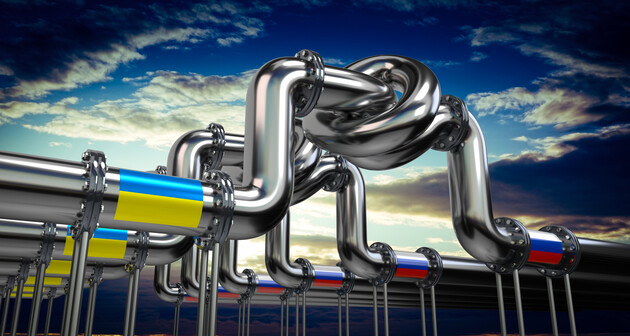





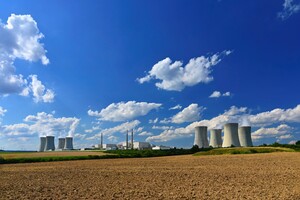
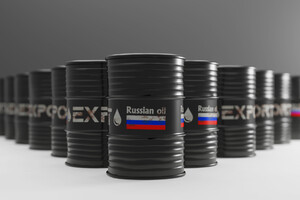
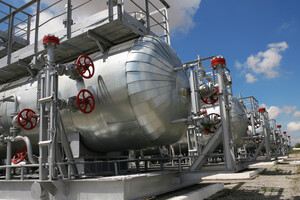
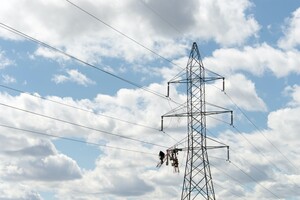
 Login with Google
Login with Google